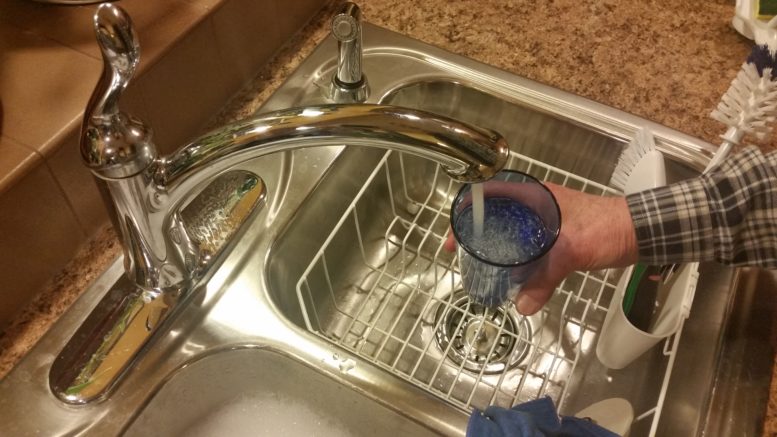By JAN LARSON McLAUGHLIN
BG Independent News
The suspect quality and high price of Toledo water has prompted Wood County to search for other sources of water for its customers now dependent on Toledo.
A study paid for by the economic development commission identified three alternate sources of water for Wood County users.
The three primary scenarios identified in the study, which was released Friday, were:
- City of Bowling Green’s water system with expanded reservoir space.
- Maumee River regional water plant with an intake and reservoir.
- Maumee River/Lake Erie Bayshore water intake, with a regional water plant and reservoir.
Wood County customers have long questioned the price of Toledo water, but also began to doubt the quality after the water crisis in the summer of 2014, when people were warned to not drink water from Toledo due to the algal blooms.
So a study was conducted to look at other options.
“The Wood County Economic Development Commission believes the national attention on the water crisis brought into question the potential impacts on future economic development attraction and retention effects for Wood County,” a release on the study results stated.
The cost of Toledo’s water to users outside the city limits also prompted the study.
“There’s a big upcharge for the suburbs,” said Wade Gottschalk, executive director for the Wood County Economic Development Commission. “We asked, are there other alternatives that are economically feasible?”
“The answer is – yes,” Gottschalk said.
The options would relieve Wood County customers’ dependency on Toledo water, said Jerry Greiner, executive director of the Northwestern Water and Sewer District.
The contract between many Wood County users and Toledo for water expires in 2024. So this study gives time for action to be taken to create other sources.
“A water plant might take five or six years to get up and running,” Gottschalk said. “Ideally, we’d like to see some sort of regional water agreement.”
The current Wood County usage from Toledo is approximately 5.5 – 6.8 million gallons per day with projected maximum usage to increase to 12.3 – 14.25 million gallons per day. To meet these demands, a 10 to 20 million gallons per day water treatment facility is required.
The Wood County study considers the capital costs, operational costs and probable rates for the three options identified.
The first scenario has Bowling Green’s water plant supplying all of the northern end of the county. The plant would have to add reservoir space, Greiner said.
The second possibility has Bowling Green adding a second water intake and expanding its plant.
And the third scenario looks at the possibility of a regional effort drawing water out from the Lake Erie Bayshore area, and building a treatment plant. No reservoir would be needed.
The results of this study are being discussed and no final recommendation has been developed. But the study is a starting point, Greiner said.
“Now we have some facts to work with,” he said.
The results of the Wood County study will be presented Monday afternoon to the Toledo Metropolitan Area Council of Governments.

